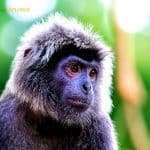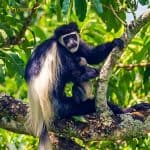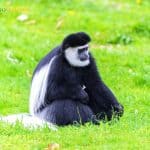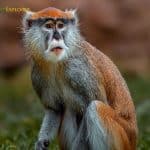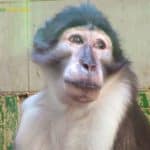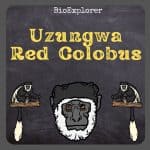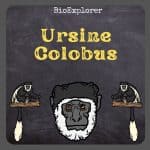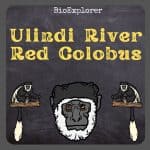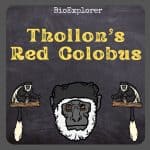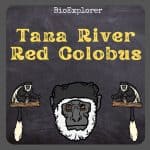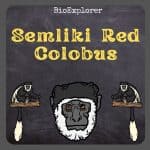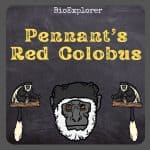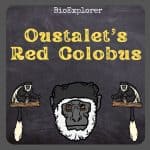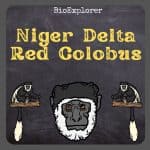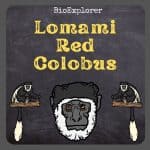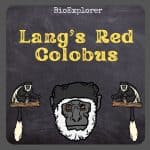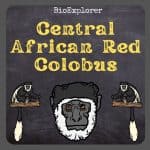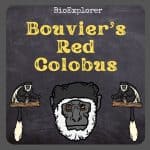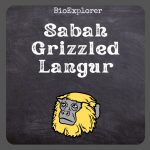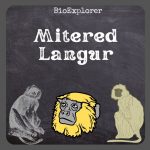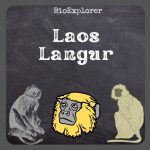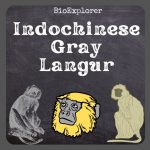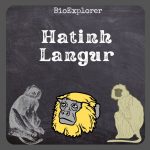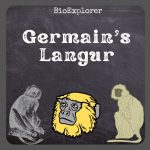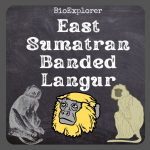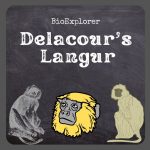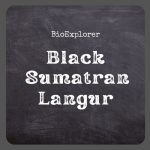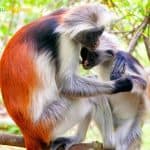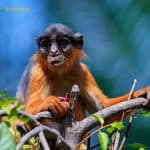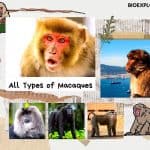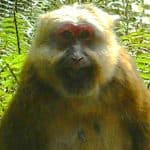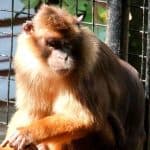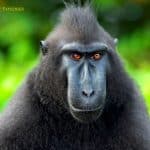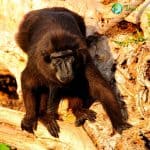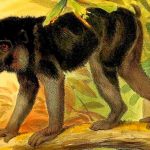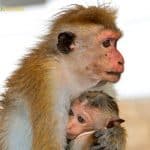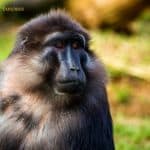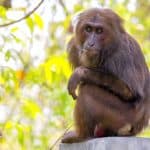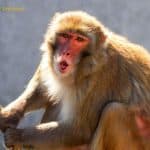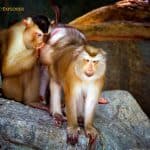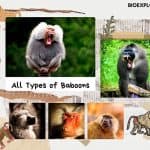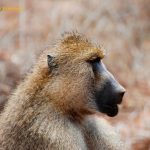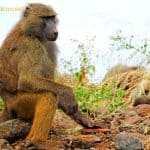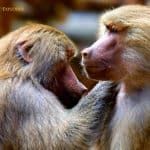Monkey - search results
If you're not happy with the results, please do another search
Natuna Island Surili
The Natuna Island Surili (Presbytis natunae) is a primate species in the Cercopithecidae family. The species is native to the Indonesian island of Natuna Besar. The species is native to the Indonesian island of Natuna Besar.
Lesula
The lesula (Cercopithecus lomamiensis) is a species of Old-World monkey occurring in the Lomami Basin of the Congo. This monkey is described as having human eyes and a blue bottom.
Javan Surili
The grizzled surili (Presbytis comata) is a threatened species of Old World monkey native to the western half of Java, Indonesia, a biodiversity hotspot. The grizzled surili engages in 3 to 4 foraging and feeding fights throughout the day.
Hose’s Langur
The Hose's langur (Presbytis hosei) is a primate species in the Cercopithecidae family native to the island of Borneo, which includes Brunei, Kalimantan (Indonesia), and eastern Malaysia. The species was first identified in 1985 in Sangkulirang Peninsula and Kutai National Park in East Kalimantan, Indonesia.
Black-shanked Douc Langur
One of three species of Douc langur (the gray-footed and the red-footed are the other two), the black-shanked douc langur is only found in southwestern Vietnam and eastern Cambodia, inhabiting primary monsoon forests as well as secondary and tropical forests.
Mount Kilimanjaro Guereza
The Mount Kilimanjaro guereza (Colobus caudatus) is one of the 7 subspecies of the mantled guereza. It is found in Kenya and Tanzania in the forests surrounding Mount Meru and Mount Kilimanjaro.
Mantled Guereza
The mantled guereza (Colobus guereza), also known as the guereza, Abyssinian black-and-white colobus, or eastern black-and-white colobus, is a black-and-white colobus, a species of Old World monkey. The mantled guerezas are typically diurnal.
Red-eared Guenon
The red-eared guenon (Cercopithecus erythrotis), also called the russet-eared guenon or red-eared monkey is endemic to the tropical and subtropical lowland rainforests of Nigeria, Equatorial Guinea, and Cameroon.
Highland Mangabey
The kipunji (Rungwecebus kipunji), also called the highland mangabey, is an Old World monkey inhabiting the upland forests of Tanzania. Kipunji is active during the day and mostly confine their activity to trees and rarely reach the ground.
Sanje Mangabey
Sanje mangabey, also called the Sanje crested mangabey and Sanje River mangabey, are Old World monkeys endemic to Tanzania, a sovereign state in East Africa. Some Sanje mangabeys prefer their own company to that of others and live alone.
Tana River Mangabey
Tana River Mangabeys are medium-sized monkeys with long, light gray hair covering most of their bodies. Tana River Mangabeys are highly social animals, living in multi-female social groups averaging 27 individuals in size.
White-naped Mangabey
Cercocebus atys lunulatus now Cercocebus lunulatus, is commonly known as the white-naped, white-headed, or white-necked mangabey (confusing with the collared mangabey). These mangabeys can also distinguish between fruiting and non-fruiting trees and are more likely to approach fruiting trees.
Udzungwa Red Colobus
The Udzungwa red colobus (Piliocolobus gordonorum), also called the Iringa red colobus or the Uzungwa red colobus is endemic to Tanzania.
Ursine Colobus
The white-thighed colobus (Colobus vellerosus), also known as ursine colobus, white-thighed black-and-white colobus, and Geoffroy's black-and-white colobus, is a species of primate in the Cercopithecidae family.
Ulindi River Red Colobus
The Ulindi River red colobus (Piliocolobus lulindicus) is native to the Democratic Republic of the Congo. This Red Colobus species is named after the Ulindi River.
Thollon’s Red Colobus
The Thollon's red colobus (Piliocolobus tholloni), also called the Tshuapa red colobus, is native to the Democratic Republic of the Congo and the Lower Republic of the Congo. It was recognized as a separate species by Dandelot in 1974, followed by Groves in 2001.
Tana River Red Colobus
The Tana River red colobus (Piliocolobus rufomitratus), also called the eastern red colobus, is a critically endangered primate species in the Cercopithecidae family. The Tana River red colobus monkeys are the only one of 18 species of red colobus that do not live in the tropical rainforest.
Semliki Red Colobus
The Semliki red colobus (Piliocolobus semlikiensis) is native to central Africa. The Semliki red colobus lives in the ironwood forest of the northeastern Democratic Republic of the Congo between the Rwenzori Mountains and the Semliki River valley.
Preuss’s Red Colobus
Preuss's red colobus (Piliocolobus preussi) is native to the Cross-Sanaga Rivers eco-region. These old-world monkeys are restricted to small areas in Cameroon and Nigeria but once occupied a much larger area.
Pennant’s Red Colobus
Pennant's Colobus or Pennant's Red Colobus (Piliocolobus pennantii) is a species of arboreal primate in the Cercopithecidae family. Like other red colobus monkeys, the Pennant's red colobus lives in flocks that may consist of 12 to 80 individuals occupying a territory of 25 to 150 hectares.
Oustalet’s Red Colobus
(Piliocolobus oustaleti) is another species of red colobus that lives in various forest types in the southern Central African Republic, southern South Sudan, northern Democratic Republic of the Congo, and northeastern Congo.
Niger Delta Red Colobus
The Niger Delta red colobus (Piliocolobus epieni) is a critically endangered colobus native to the western part of the Niger Delta in southern Nigeria. The scientific name of the Niger Delta red colobus, Piliocolobus epieni, comes from the local Ijaw language word for the species, "epieni".
Miss Waldron’s Red Colobus
Miss Waldron's red colobus (Piliocolobus waldronae) is endemic to West Africa. Miss Waldron's red colobus was discovered in December 1933 by Willoughby P. Lowe, a collector at the British Museum (Natural History).
Lomami Red Colobus
The Lomami red colobus (Piliocolobus parmentieri) is native to central Africa. The Lomani red colobus monkey has a restricted range in the lowland rainforest between the Lomani River and the Lualaba River in the central Democratic Republic of the Congo.
Lang’s Red Colobus
Lang's red colobus (Piliocolobus langi) is another species of red colobus monkey. Historically, it was treated as a subspecies of the Central African red colobus (Piliocolobus foai). Still, more recent taxonomies generally treat it as a distinct species.
Foa’s Red Colobus
Foa's Red Colobus or Central African red colobus is endemic to the Democratic Republic of the Congo. Generally, these African primates are found in large groups of 20 to 90 individuals.
Bouvier’s Red Colobus
Bouvier's Red Colobus was rediscovered in 2015 in the Republic of Congo after four decades without confirmed sightings. These African primates live in the swampy forests surrounding the Congo River, between the mouths of the Oubangui and Alima rivers.
Shan State Langur
Shan State Langur was generally considered a subspecies or a synonym of Phayre's leaf monkey (Trachypithecus phayrei) until Roos et al. elevated it to species status in 2020.
Saban Grizzled Langur
Saban Grizzled Langur was once thought to be a subspecies of the Hose's langur, Presbytis hosei (as Presbytis hosei sabana). The Saban grizzled langur is endemic to the island of Borneo in the Malaysian province of Sabah, with part of its range in Indonesia.
Pig-tailed Langur
The pig-tailed langur (Simias concolor), monotypic in the Simias genus, is a great Old-World monkey native to several small islands off Sumatra, Indonesia. Adult pig-tailed langurs have black faces and small, turned-up noses.
Mitered Langur
The mitered langur has brown or gray fur on its back, darker, while it is even darker on its belly and the arms, legs, and tail. These Indonesian primates live in groups of 1 male with 5 to 17 females.
Miller’s Langur
Miller's Langur (Presbytis canicrus), also called the Kutai Gray Langur, is the rarest of the four Hosei subspecies, all of which are native to the island of Borneo. One of the world's most endangered primates, Miller's langur, was once considered extinct until it was rediscovered in 2013.
Mentawai Langur
Mentawai Langur is also called the Long-Tailed Langur, and it is native to the Mentawai Islands in Indonesia. The pelage of Mentawai langur is medium length, longer on the back of the shoulders and anterior of the flanks and shorter on the face, neck, abdomen, and under the thighs.
Laotian Langur
The Laotian langur (Trachypithecus laotum), also known as white-browed black langur, is another primate species that nest in small limestone caves and holes that shelter from predators, rain, and cold.
Indochinese Grey Langur
The Indochinese gray langur (Trachypithecus crepusculus) is a species of Lutung native to Southeast and East Asia. This species was once thought to be conspecific with the Phayre's leaf monkey (Trachypithecus phayrei).
Hatinh Langur
The Hatinh langur (Trachypithecus hatinhensis) is a critically endangered Old World monkey found in the limestone forests of Vietnam, particularly in Quảng Bình province. Contrary to their common name, the Hatinh langur is not known from the province of Hà Tĩnh.
Germain’s Langur
Germain's Langur is a lutung species endemic to Thailand, Vietnam, Laos, Cambodia, and Burma. Germain's langur is a terrestrial tree-dwelling species occasionally found in lowlands.
East Sumatran Banded Langur
The East Sumatran banded langur also called the East Sumatran banded surili are primarily found in the fragmented landscape of pulp and rubber plantations. These surilis are shy and alert creatures, rarely leaving the comfort of their canopies.
Delacour’s Langur
The Delacour's langur, also known as Delacour's Lutung, is an endangered Lutung native to northern Vietnam. The species is named after Jean Théodore Delacour, a French-American ornithologist.
Cross Marked Langur
The Sarawak surili, also known as Cross-marked Langur, is a monkey species in the Cercopithecidae family. The Sarawak surili was once considered widespread but has declined significantly due to habitat and loss persecution.
Black and White Langur
The black-and-white langur is a primate species in the Cercopithecidae family. It was formerly thought to be a subspecies of the Presbytis melalophos (black-crested Sumatran langur). Still, the genetic analysis indicated they were separate species.
Black Sumatran Langur
The black Sumatran langur is a species of monkey in the Cercopithecidae family that is endemic to Indonesia's Sumatra Island. Presbytis sumatrana was once considered a subspecies of Sumatran Surili. Still, genetic analysis has shown it to be a distinct species.
Indochinese Black Langur
The Indochinese black langur (Trachypithecus selbstus) is a little-known Lutung endemic to Laos and neighboring Vietnam. Because they live in dense forests and rarely venture outside, observing them in the wild can be difficult.
Zanzibar Red Colobus
The Zanzibar red colobus (Piliocolobus kirkii) is endemic to Unguja, the main island of the Zanzibar archipelago off the coast of Tanzania. The Zanzibar red colobus, often referred to as Kirk's red colobus is named after Sir John Kirk, the British resident of Zanzibar who first spotted these creatures.
Western Red Colobus
The western red colobus (Piliocolobus badius), also called the Upper Guinean red colobus, rust red colobus, or bay red colobus is a species of Old-World monkey found in the forests of West Africa, from Senegal to Ghana.
Macaques
Macaques are old-world monkeys hailing from the Asian continent, with a few from Africa. Currently, 23 species of living macaques are classified under the genus Macaca in the family Cercopithecinae, and 5 extinct macaques.
White-Cheeked Macaque
The white-cheeked macaque (Macaca leucogenys) is found only in Medog County in southeastern Tibet and the Arunachal Pradesh state of India. The species was first discovered and described by Chinese primatologists Peng-Fei Fan, Cheng Li, and Chao Zhao in the American Journal of Primatology in 2015.
Pagai Island Macaque
The Pagai island macaque (Macaca pagensis), also called the Pagai or Bokkoi macaque is an Old-World monkey native to the Mentawai Islands on the west coast of Sumatra. Groups of Pagai Island macaques consist of approximately 5 to 25 individuals.
Heck’s Macaque
The Heck's Macaque (Macaca hecki) is a macaque native to Sulawesi, Indonesia. This Old-World monkey is diurnal. Due to their frugivorous diet, Heck's macaques will likely act as seed dispersers throughout their habitat.
Gorontalo Macaque
The Gorontalo macaque (Macaca nigrescens), also called the Dumoga-bone macaque, is a species of the primate of the Cercopithecidae family. It is native to the Sulawesi Island of Indonesia.
Booted Macaque
The booted macaque is a macaque native to Indonesia's Sulawesi Island. This Old-World monkey is diurnal, spending most of the day in trees. A booted macaque monkey's body mass is determined by its sex, with males significantly larger than females.
Toque Macaque
The toque macaque (Macaca sinica) is a red-brown Old World monkey endemic to Sri Lanka, known as the rilewa or rilawa. Its common name refers to the strand of hair on its head that resembles a brimless hat.
Tonkean Macaque
Tonkean macaques also known as Tonkean black macaques, are endemic to the central part of the island of Sulawesi and the neighboring Togian Islands in Indonesia. Tonkea macaques are pretty intelligent and creative.
Stump-tailed Macaque
The stump-tailed macaque, also known as the bear macaque, is an Old World monkey endemic to Cambodia, northeastern India, southwestern China, Myanmar, and Laos, from northwestern Peninsular Malaysia, Vietnam, and Thailand.
Rhesus Macaque
The rhesus macaque (Macaca mulatta), commonly known as the rhesus monkey, is a species of Old-World monkey. Rhesus monkeys are diurnal animals, both arboreal and terrestrial.
Sunda Pig-Tailed Macaque
The pig-tailed macaque (Macaca nemestrina), also called the Sundaland pig-tailed macaque and Sunda pig-tailed macaque is a medium-sized macaque native to southern Thailand, Indonesia, and Malaysia. Pig-tailed macaques also have long legs and hairless snouts.
Baboons
Baboons are another breed of Old-world monkeys classified under the genus Papio. There are 6 types of baboons. Explore all about baboons here.
Yellow Baboon
The yellow baboon (Papio cynocephalus) is another baboon species in the group of Old World monkeys. They resemble the Chacma baboon but are slightly smaller and have a less elongated snout. Yellow baboons also have white fur on internal surfaces, such as their cheeks and limbs, similar to the color of the human forearm.
Olive Baboon
The Olive baboon (Papio anubis), also called the Anubis baboon, is a species of the Cercopithecidae family of Old-World monkeys. The name comes from the Egyptian god Anubis.
Kinda Baboon
The Kinda baboon (Papio kindae) is a species of baboon found in the Miombo forests of Angola, Zambia, the Democratic Republic of the Congo, and possibly western Tanzania. The species is named after the town in the southern Democratic Republic of the Congo.




